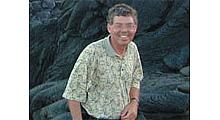Software-Defined RF Test Gear

Doug Lung National Instruments recently announced that it has delivered “software defined instrumentation” to new instrument types and automated test applications. NI's first software defined instrument, the vector signal transceiver, was introduced two years ago and was used by Qualcomm Atheros to improve test speeds by more than 200x and by Hittite Microwave to reduce test times by more than 30x.
The latest SDIs from NI are targeted at automated test and research applications in other industries, including wireless and mobile devices. The NI software-defined instruments contain a user-programmable FPGA that can be customized using NI's LabVIEW system design software without the need to use specialized FPGA program languages such as VHDL and Verilog or outsource development to digital design expert whenever a customization is needed.
Prathima Bommakanti, industry analyst for measurement and instrumentation at Frost and Sullivan commented, “Providing a user-programmable FPGA can lead to astounding benefits for the customer, enabling them to drill down into the instrument and change the performance drastically. With this new class of instrumentation, users are able to turn the instrument into whatever they need, a paradigm shift in an industry in which products have essentially been defined by the vendor as opposed to the customer.”
More information is available at ni.com/software-designed-instruments.
Ever since I purchased a relatively inexpensive Ettus B200 software defined radio (purchased, incidentally, through NI) I've been looking for ways to use it as a test instrument. While I have yet to turn it into an ATSC Vector Signal Analyzer, I've had good luck with some simpler applications. Look for details in my September RF Technology column in TV Technology magazine.
Get the TV Tech Newsletter
The professional video industry's #1 source for news, trends and product and tech information. Sign up below.
Doug Lung is one of America's foremost authorities on broadcast RF technology. As vice president of Broadcast Technology for NBCUniversal Local, H. Douglas Lung leads NBC and Telemundo-owned stations’ RF and transmission affairs, including microwave, radars, satellite uplinks, and FCC technical filings. Beginning his career in 1976 at KSCI in Los Angeles, Lung has nearly 50 years of experience in broadcast television engineering. Beginning in 1985, he led the engineering department for what was to become the Telemundo network and station group, assisting in the design, construction and installation of the company’s broadcast and cable facilities. Other projects include work on the launch of Hawaii’s first UHF TV station, the rollout and testing of the ATSC mobile-handheld standard, and software development related to the incentive auction TV spectrum repack.
A longtime columnist for TV Technology, Doug is also a regular contributor to IEEE Broadcast Technology. He is the recipient of the 2023 NAB Television Engineering Award. He also received a Tech Leadership Award from TV Tech publisher Future plc in 2021 and is a member of the IEEE Broadcast Technology Society and the Society of Broadcast Engineers.

